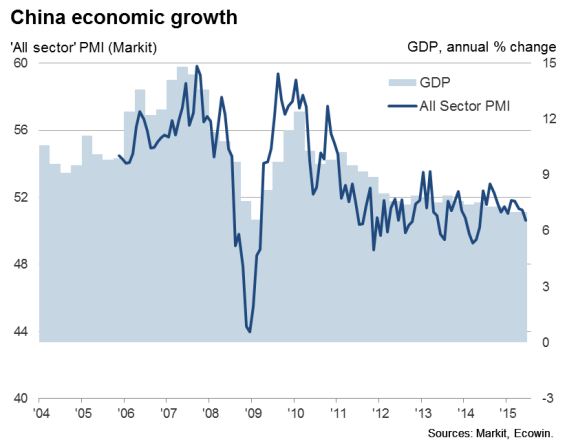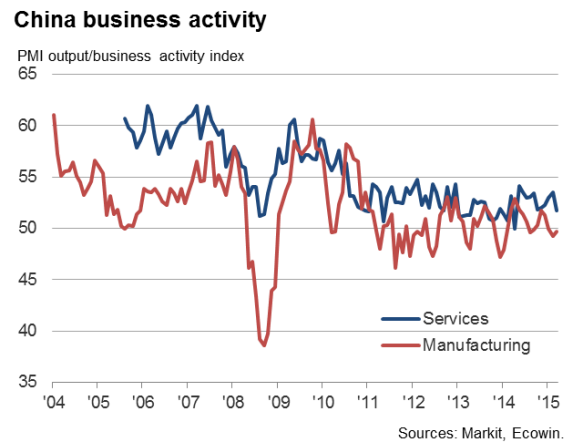China's economic growth holds steady at 7.0% in second quarter
Official data indicated the Chinese economy grew at an annual rate of 7.0% in the second quarter, unchanged on the pace seen in the first three months of the year and raising hopes that recent stimulus efforts - including four cuts to interest rates since November - are helping to prevent a further slowdown. So far, however, there are mixed messages in relation to growth momentum heading into the second half of the year.
The official data are broadly in line with PMI survey data. The composite output index derived from the manufacturing and service sector PMI surveys, compiled by Markit, averaged 51.1 in the three months to June, down only marginally from 51.5 in the first quarter.

However, the surveys paint a more worrying picture of growth momentum heading into the third quarter. The headline output index fell from 51.2 in May to 50.6 in June, its lowest since May of last year. Growth weakened in the service sector and factories reported a second successive month of falling output (albeit only a modest decline).

Markit's Business Outlook survey also made for disappointing reading. Business optimism about activity levels in the year ahead fell in China to the weakest seen in the history of the survey dating back to 2009, contributing to the worst global outlook seen since the financial crisis.
Perhaps more important is the downturn in the labour market indicated by the business surveys. While the authorities are likely to tolerate slower economic growth, rising unemployment is less likely to be considered acceptable due to the potential for joblessness to cause social instability. The PMI surveys showed employment falling at one of the fastest rates seen since the height of the global recession in early-2009. The Business Outlook survey likewise showed hiring intentions down to their weakest since the financial crisis.
The loss of momentum in June, and the darkening of the employment picture in particular, suggests the authorities may have to step up their stimulus efforts to prevent a further deterioration in the economy. Further time may be required, however, before existing measures can take effect. Lending data released this week, for example, showed that lower borrowing costs are at least encouraging companies to borrow more to invest.
Borrowing in the first half of the year is down almost one-fifth on last year and, at 11.4%, fixed-asset investment growth is running well below the government's 15% target which it sees as consistent with achieving economic growth of 7.0% this year. The Business Outlook survey at least showed capex intentions holding steady compared to levels seen earlier in the year, and the rise in credit may provide a vital fillip to growth in the second half of the year.
Chris Williamson | Chief Business Economist, IHS Markit
Tel: +44 20 7260 2329
chris.williamson@ihsmarkit.com